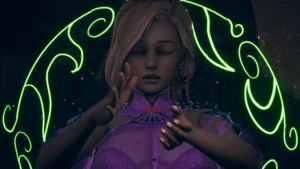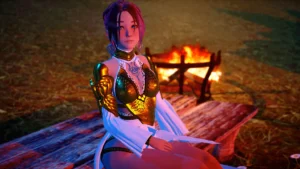
Evermore
Play Evermore
Evermore review
An In-Depth Look at Evermore’s Gameplay, Features, and Player Experience
Evermore is a captivating game that offers players a unique blend of immersive storytelling and interactive gameplay. This guide dives into the core aspects of Evermore, providing insights into its gameplay mechanics, character progression, and what makes it stand out in its genre. Whether you’re new to Evermore or looking to deepen your experience, this article will walk you through everything you need to know to get started and enjoy the game to its fullest.
Understanding Evermore: Gameplay and Features
What Makes Evermore Unique? ✨
I remember the first time I booted up Evermore. I’d been playing fantasy RPGs for years, and I thought I knew what to expect: slay the dragon, save the kingdom, rinse, and repeat. But within an hour, I was completely disarmed. I wasn’t just a hero on a pre-set path; I was a person shaping a living world. This is the heart of Evermore’s unique gameplay. It doesn’t just tell you a story—it gives you the tools to build your own, and that changes everything.
So, what truly sets it apart? It’s the Living World Tapestry system. 🗺️ Unlike other games where your actions might change a character’s dialogue or unlock an ending, your choices in Evermore have tangible, visible effects on the game world itself. I once spent a significant portion of the early game helping a small village rebuild its broken mill. A dozen hours later, I passed through again and the place was thriving—new buildings, new vendors, and even new quest lines had sprung up. The world had evolved because of a choice I made. This level of dynamic consequence is a cornerstone of the Evermore player experience, making you feel less like a visitor and more like a fundamental force within the realm.
Another standout among the Evermore game features is the Emotional Resonance mechanic. Your character isn’t a blank slate; they have emotional responses to events. During a tense negotiation, I chose a compassionate dialogue option, which not only swayed the NPC but also triggered a “Hopeful” state for my character, granting me a temporary bonus to healing abilities. Your emotional state is a resource, and learning to manage it is a huge part of the strategy. It’s a layer of depth I’ve rarely encountered elsewhere.
Core Gameplay Mechanics Explained 🎮
Understanding the Evermore gameplay mechanics is key to enjoying everything the world has to offer. At first glance, it might seem familiar, but the devil—and the delight—is in the details. Let’s break down how to navigate, interact, and grow in this beautiful, complex world.
Navigation and Exploration:
The world of Evermore is vast, but it never feels empty. Getting around is a pleasure, thanks to a fluid movement system and a map that reveals itself organically. You don’t just reveal fog-of-war; you fill in the map by discovering landmarks, talking to travelers, and even deciphering old scrolls. My biggest tip here? Talk to everyone. A casual comment from an innkeeper about “the old ruins to the north” can lead to an undiscovered dungeon that isn’t marked on any standard map. This organic discovery process is a fundamental part of how to play Evermore successfully.
Interaction and the Dialogue Web:
Forget simple good/evil dialogue wheels. Evermore uses a “Dialogue Web” where your choices branch out and connect in unexpected ways. An offhand promise you make to one character might be remembered by another three quests later, opening up or closing off avenues you never anticipated. I learned this the hard way when I casually agreed to deliver a letter, only to find myself entangled in a political conspiracy that became one of the game’s major arcs. Every conversation matters.
Progression Systems:
Your growth in Evermore isn’t just about gaining levels. It’s about mastering Aspects. Instead of a rigid class system, you invest in broader concepts like “Flame,” “Stone,” or “Shadow.” Each Aspect governs a suite of abilities, and you can mix and match to create a truly unique build. I focused on “Flame” for offensive magic and “Stone” for durability, creating a battlemage who could wade into the thick of combat. The freedom here is incredible. Understanding this flexible progression is the most important piece of how to play Evermore for long-term success.
Pro Tip: Don’t spread your Aspect points too thin early on. Focus on one or two to unlock their more powerful abilities faster. You can always diversify later!
Character Progression and Customization 🎭
If there’s one area where Evermore truly shines, it’s in giving you control over your identity. The Evermore character customization begins the moment you start the game and never really stops. This isn’t just about picking a nose shape; it’s about crafting a legacy.
The initial creator is incredibly deep, allowing for a stunning degree of physical personalization. But the real magic happens in-game. Your choices in quests, dialogue, and even which factions you assist will physically alter your character. Align yourself with ancient nature spirits, and you might find faint vine-like tattoos appearing on your skin. Spend too much time delving into forbidden arcane knowledge, and your eyes might start to glow with an eerie light. Your character’s appearance becomes a living resume of your journey.
The progression system dovetails perfectly with this. As you invest in your chosen Aspects, you unlock not just new skills, but also cosmetic alterations and unique social options. Mastering the “Flame” Aspect, for instance, allowed my character to intimidate certain foes without a fight, just by summoning a wreath of fire around my fists. This seamless integration of gameplay and role-playing is what makes the Evermore player experience so immersive.
To help you plan your journey, here’s a breakdown of how some key choices interconnect:
| Customization Area | Gameplay Impact | Player Experience Tip |
|---|---|---|
| Aspect Specialization (e.g., Flame, Stone, Shadow) | Determines your core combat abilities, skill checks, and unlockable talents. | Commit to a theme that fits your desired playstyle early on for a smoother power curve. |
| Faction Allegiance (e.g., Artisans’ Guild, Silent Woodsfolk) | Grants access to unique quests, gear, and can alter how NPCs react to you. | You can be friendly with multiple factions, but your “true” allegiance will be tested in the late game. |
| Dialogue Tendencies (Compassionate, Cunning, etc.) | Unlocks special dialogue paths and can trigger temporary buffs based on your emotional state. | Role-play consistently! Your “reputation” for a certain attitude can open doors you didn’t know existed. |
| Crafting Profession (Alchemy, Blacksmithing, etc.) | Allows you to create powerful consumables and gear that can’t be found anywhere else. | Pick one profession and stick with it. The high-level recipes are game-changers. |
My final piece of advice on Evermore character customization is to embrace the consequences. Don’t try to build a “perfect” character who is good at everything. The most memorable stories come from your character’s specific strengths, flaws, and the unique path they carve through the world. These Evermore game features are designed to make your journey singular. So dive in, make choices that feel true to your character, and watch as the world of Evermore bends and shifts around you. It’s an adventure that is, without question, your own. 🌟
Evermore offers a distinctive gaming experience with its engaging mechanics and customizable gameplay. Whether you’re exploring its world for the first time or refining your strategy, understanding its core features enhances enjoyment and success. Dive in, experiment with character options, and immerse yourself in the unique environment Evermore provides. Ready to start your adventure? Jump into Evermore and discover what makes it a standout title.

















